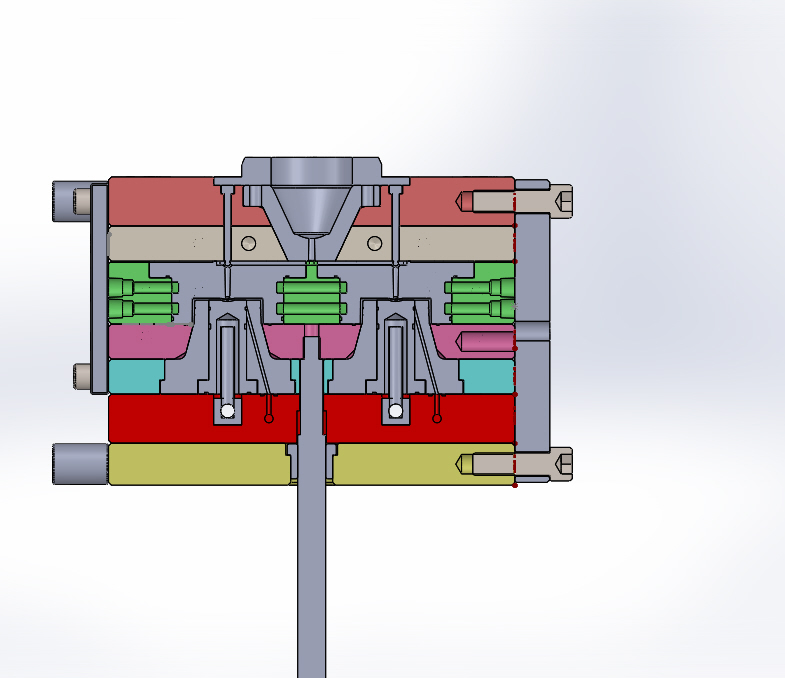- Home
- Lean Principles
- Machine Selection
- Mold Design
- Mold Interlocking
- Mold Making
- Plastic Material Technology
- Molding Process
- Plastic News
- What's New
- Privacy Policy
- Disclaimer
- Site Map
- Poll
- Polishing
- 3D Rapid Prototyping
- Molding Companies
- Contact Us
- Proven Thinwall Packaging Mold Designs For Sale
- MOLD WEIGHT CALCULATOR
- HOT RUNNER VERSUS COLD RUNNER
Plastic Dryers, Moisture Measurement And Part Quality
Plastic dryers are used to remove moisture (water) that has been absorbed either onto the surface of plastic pallets or into the plastic pallets internal structure before they go into the injection molding machine to make parts.
There are 2 groups of plastics. The first group will only hold water on its surface (such as polypropylene) while the second group will absorb it into its internal structure (such as PET polyester).
Drying is required to ensure good quality parts are made consistently. Plastics with excess moisture levels will react when processed in the molding machine barrel and will produce by-products that will effect such things as impact strength in the finished molded part.
Plastics That Need To Be Dried Before Processing:
1. SAN
2. PVC
3. ABS
4. PPO
5. ACRYLIC
6. ACETAL
7. PPS
8. POLYCARBONATE
9. PET POLYESTER
10. PEI
11. POLYURETHANE
12. NYLON
13. PBT POLYESTER
Plastics 1 to 7 need to be dried for cosmetic reasons only. Excess moisture will cause bubbles, flow lines or surface defects in the molded part. However, their mechanical properties are not affected by moisture.
Excess moisture in the plastics 8 to 13 will affect the mechanical properties in the molded part. The part will have reduced impact and tensile strength but will not show any cosmetic defects. This fact is very important to know so that moulders do not rely upon visual checks to ensure the quality of the molded part.
Why It Is Important To Measure Moisture Level After Drying.
Processing plastic pallets in an injection molding machine that have not been dried to the required level can lead to disastrous consequences in the field. Parts that look good are not necessarily strong enough to function properly. This means you are not just wasting time producing rejects but more importantly are likely to damage your company’s reputation as a quality supplier.
Just because the plastic material is dried at the recommended temperature and length of time doesn’t mean the material is dry enough to process. If the desiccant dryer has not been maintained properly then the plastic material may still have too much moisture and may need to be dried for a longer period of time.
That’s why it is critical that the moisture content is measured before processing. This should be done on a daily basis so that moisture can be eliminated as a reason for any part quality issues.
Moisture Measurement Methods.
There are 2 different systems of moisture measurement - massed based and sensor based instruments.
Sensor based (usually Karl Fischer) are the most accurate because they will only measure the moisture level in the pallets. However, the massed based systems will measure the moisture level along with other volatiles produced during the analysing process giving a false reading.
The appeal of massed based systems are their lower purchase price compared with sensor based and are easier to use. But these are not reasons to use this type of instruments because they do not give accurate and repeatable results.
Additional Comments
As an injection moulder you spend millions of dollars in equipment such as molding machines, moulds and chillers so there is no excuse not to spend a bit more on quality plastic dryers and moisture measuring equipment.
What’s more, material cost is an injection moulders largest ongoing expense so it is critical that waste is eliminated.
Return from Plastic Dryers to Plastic Injection Molding Process
Return from Plastic Dryers to HomePage
References
1. DuPont Polyester Resins
2. www.plasticsToday.com "The Materials Analyst" March 2002 By Michael Sepe





